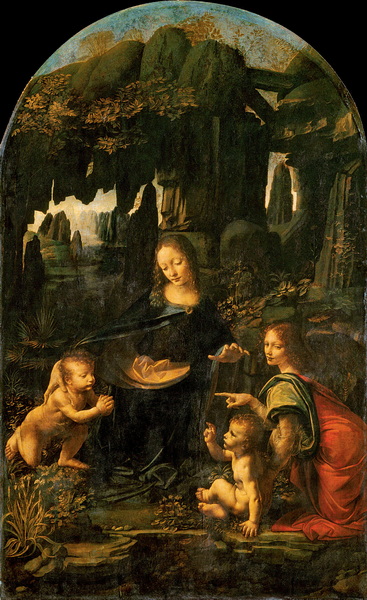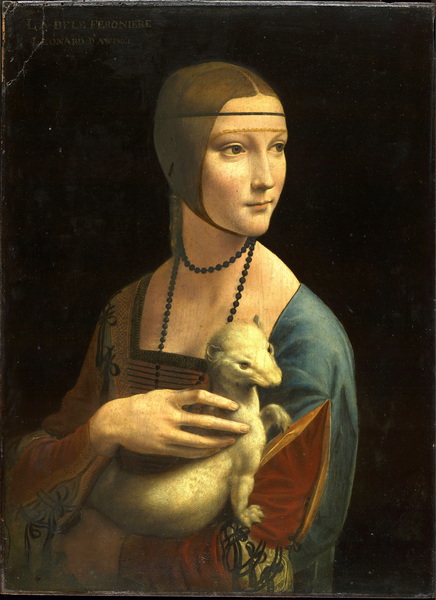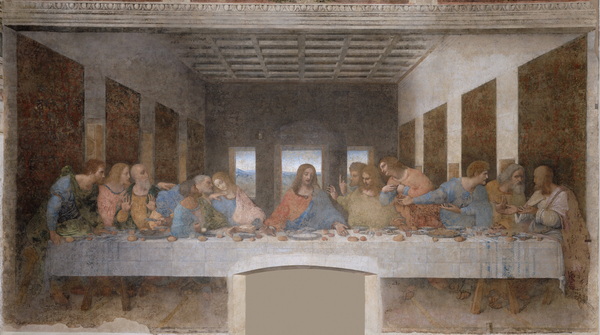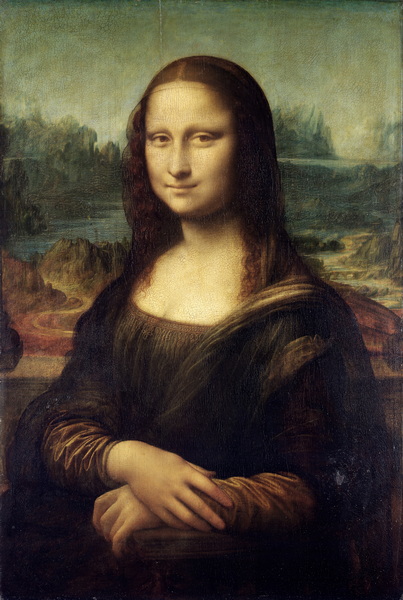
Leonardo da Vinci – la Belle Ferroniere – Portrait of a Lady from the Court of Milan Poster Print by Leonardo Da Vinci

Lady with an Ermine – Portrait of Cecilia Gallerani (ca. 1473–1536)

The Last Supper, a renowned masterpiece by Leonardo da Vinci

The Last Supper, a renowned masterpiece by Leonardo da Vinci.
Here is a detailed introduction following the format similar to that of the Mona Lisa:
1. Commission and Subject
- Commission: It was commissioned by Ludovico Sforza, the Duke of Milan, for the refectory of the Santa Maria delle Grazie convent in Milan, Italy. The project was part of a larger renovation of the convent complex.
- Subject: The painting depicts the scene of Jesus Christ’s last meal with his twelve apostles before his crucifixion, as described in the Christian Gospels. It captures the moment when Jesus announces that one of his apostles will betray him, resulting in a range of emotional and dramatic reactions among the figures.
2. Leonardo’s Motives
Leonardo da Vinci was eager to explore human emotions and group dynamics through his art. In The Last Supper, he masterfully uses body language, facial expressions, and gestures to convey the shock, disbelief, and concern of the apostles. He also experimented with new techniques. Instead of using the traditional fresco method (which involves painting on wet plaster), he developed a new technique that allowed for more detailed and nuanced color work. However, this technique proved to be less durable over time.
3. Historical and Cultural Context
- Time of Creation: It was painted between 1495 and 1498, during the High Renaissance. This period was characterized by a flourishing of art, science, and culture, with a strong emphasis on humanism. The painting reflects the humanist ideals by presenting the apostles as individual, three – dimensional characters with distinct personalities, rather than just as generic religious figures.
- Influence: The composition of The Last Supper, with Jesus at the center and the apostles arranged in groups of three on either side, has had a profound influence on Western art. It established a new standard for representing this biblical scene and inspired countless artists in subsequent centuries.
4. The Painting’s Journey
- Initial Condition and Deterioration: Due to Leonardo’s unorthodox painting technique, the work began to deteriorate soon after its completion. By the 16th century, it was already showing signs of damage, such as flaking paint.
- Restoration Efforts: Over the centuries, numerous restoration attempts have been made. During the French occupation of Milan in the late 18th century, the convent was used as a stable, and the painting was further damaged. In the 19th century, some restoration work was carried out, but it was not until the 20th – century restoration (which lasted from 1978 to 1999) that a more comprehensive and scientific approach was taken to preserve the painting.
- Current Status: Today, The Last Supper is one of the most famous and visited artworks in the world. It is still located in the refectory of the Santa Maria delle Grazie in Milan. The convent and the painting are protected as a UNESCO World Heritage Site, and strict access regulations are in place to preserve the fragile artwork. Only a limited number of visitors are allowed to enter the refectory at a time, and they must follow specific rules to minimize the impact on the painting’s environment.
FOR the arkwork of “The Last Super“, we have SUPER HD Version, the definition is 33000 X 18445, Probably the highest-Resolution that you could find online.
Mona Lisa, created by Leonardo da Vinci during the Renaissance

The Mona Lisa is an iconic painting by Leonardo da Vinci, and here are some more detais:
1. Commission and Subject
The identity of the Mona Lisa is still a subject of some debate, but the most widely – accepted theory is that she was Lisa Gherardini, the wife of Florentine merchant Francesco del Giocondo. It is believed that the painting was commissioned to celebrate the couple’s new home and the birth of their second son. However, some scholars have proposed alternative identities, such as Caterina Sforza or even a self – portrait of Leonardo in female form, but these are less widely supported.
2. Leonardo’s Motives
Leonardo da Vinci was not just a painter but also a scientist, inventor, and engineer. He was deeply interested in human anatomy, optics, and the natural world. The Mona Lisa allowed him to showcase his mastery of various techniques and his understanding of human expression. He spent years perfecting the painting, using his knowledge of sfumato (a soft, smoky blending of colors) and chiaroscuro (the contrast between light and dark) to create a lifelike and mysterious figure. The background landscape, with its winding roads and hazy mountains, also demonstrates his fascination with nature and perspective.
3. Historical and Cultural Context
The painting was created during the High Renaissance, a period of great artistic and intellectual growth in Europe. Humanism, which emphasized the value and potential of the individual, was a dominant ideology. The Mona Lisa reflects this humanist focus by centering on an individual woman, capturing her unique expression and presence. Leonardo’s work also influenced later generations of artists, who were inspired by his technical skills and his ability to convey complex emotions.
4. The Painting’s Journey
The Mona Lisa has had a long and eventful history. It was in Leonardo’s possession until his death in 1519, after which it was acquired by King Francis I of France. It remained in the French royal collection for many years. After the French Revolution, it was moved to the Louvre Museum. In 1911, the painting was stolen by Vincenzo Peruggia, an Italian handyman who worked at the Louvre. He believed the painting should be returned to Italy. The theft caused a sensation, and the painting was missing for two years before it was recovered in Florence. Since then, it has remained one of the most popular and well – known artworks in the world, attracting millions of visitors to the Louvre each year.
5. The Enigmatic Smile
One of the most famous aspects of the Mona Lisa is her smile. It has been the subject of much speculation and analysis. Some have suggested that the smile is a result of Leonardo’s use of sfumato, which creates a soft, ambiguous expression. Others have proposed psychological interpretations, such as the idea that the smile reflects a complex mix of emotions, including happiness, mystery, and perhaps a hint of sadness or reserve. This ambiguity has contributed to the painting’s enduring appeal and has made it one of the most studied and discussed artworks in history.
More detailed information about Mona Lisa:
- Creation and Completion Time: It was painted between 1503 and 1517. It’s uncertain when exactly it was finished, as some scholars believe Leonardo da Vinci might not have clearly indicated its completion or perhaps never fully completed it.
- Auction Information: The original Mona Lisa has never been auctioned. However, in 2021, an artwork claimed to be by da Vinci and similar to Mona Lisa, dated around 1600, was to be auctioned by Artcurial on November 9. The estimated price was between 150,000 and 200,000 euros. In 2021, a copy of Mona Lisa by Leng Jun, Mona Lisa – Design of a Smile, was auctioned at Guardian. Its starting price was 58 million yuan, and the final transaction price with commission was 80.5 million yuan. In 2023, a replica of Mona Lisa was sold for 2.9 million euros at an auction in Paris.
- Current Status: The Mona Lisa is currently housed in the Louvre Museum in Paris, France. It is placed behind bulletproof glass and protected by strict security measures.
FOR MONA LISA, we have SUPER HD Version, with over 120 Million Pixels. Probably the highest-Resolution that you could find online.
